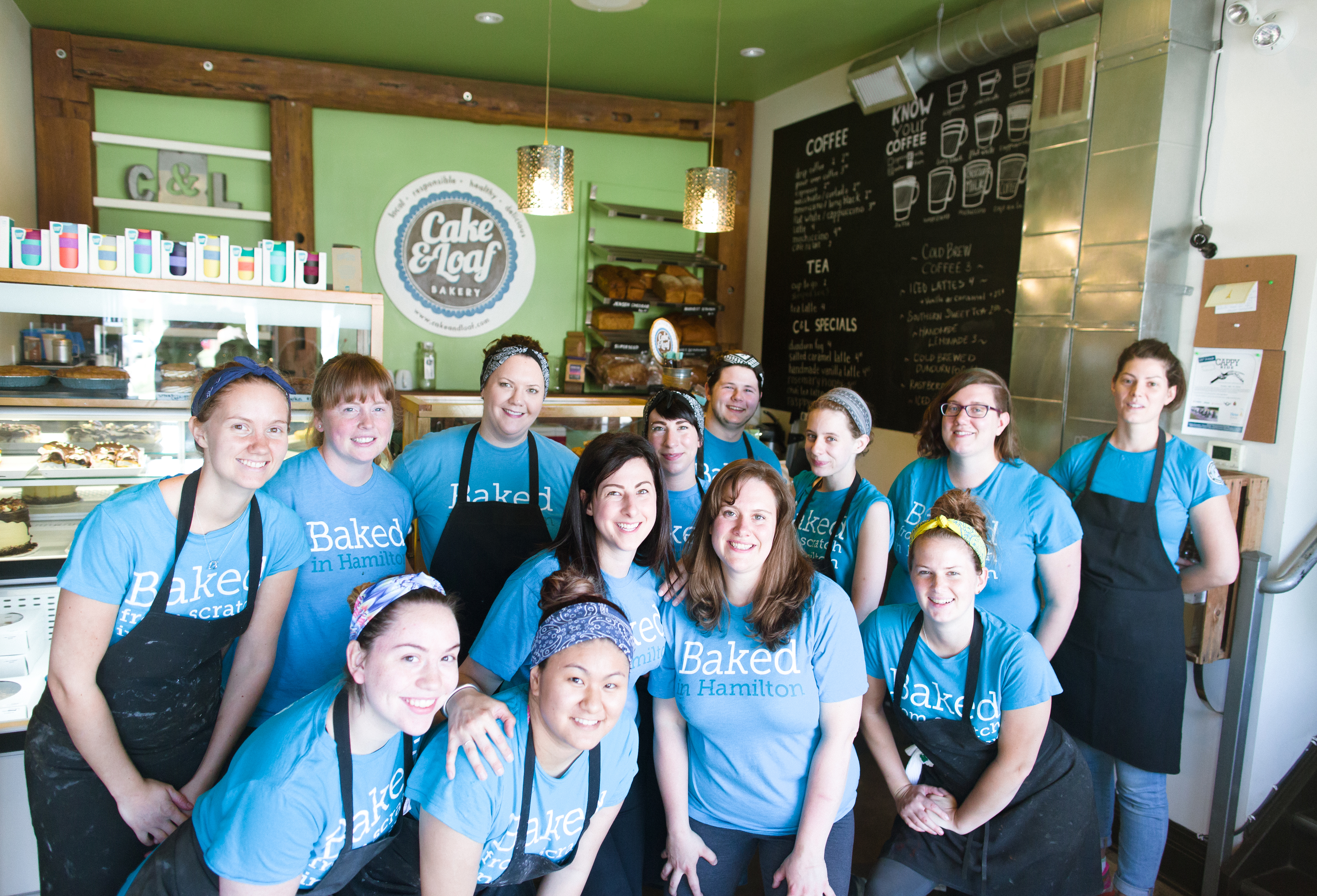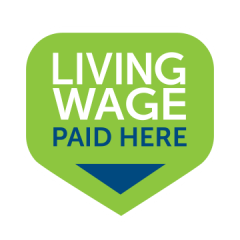by Leah Piehler, CFICE Volunteer
Businesses in Hamilton, Ont., are proving that a living wage is a win-win for both employees and employers.
The current minimum wage doesn’t guarantee a decent quality of life for workers. It focusses mainly on survival needs, but people need more than just food and shelter to live a dignified life.
A living wage allows workers to have flexibility for modest social expenses like visiting a local tourist attraction, or enrolling children in recreational activities. It varies by location, taking into account local factors such as child care and transportation costs, which impact the cost of living.
To put things into perspective, Ontario’s current minimum wage is $11.40, while the average living wage in Hamilton is $15.85 as of November 2016.
Unlike the minimum wage, providing a living wage is not mandated by law; it’s a choice made by employers.
Josie Rudderham, co-owner of Cake and Loaf bakery in Hamilton, says working closely with her employees made providing a living wage an easy choice.
“I can’t work next to someone everyday knowing that they might be struggling with having enough money for transportation, or making sure that their kids have healthy lunches,” she says.
The benefits of a living wage for employees are clear, but what about for employers?
CFICE’s Poverty Hub funded a study in Hamilton on the experiences of living wage employers and employees, and found that implementing a living wage is beneficial for both parties. According to the study, offering a living wage leads to a more engaged, more committed, and happier workforce with low turnover, which is beneficial for businesses.
Living wage business owners in Hamilton agree with the study’s findings.
With a living wage, employees only need one job to make ends meet.
“You don’t have people coming to work tired because they just worked a night shift and now they’re coming to work for you,” Rudderham explains. “With a living wage hopefully you’re able to just have one job, which helps you focus on that job, which is certainly beneficial to employers.”

The Cake and Loaf team. Left to right – Back row: Kristin VanDerMolen, Amanda Gall, Helen MacKinnon, Erin Sherman, Kyle Lavigne, Agatha Humfrey Katie McCrindle, Megan Sonke; Front row: Quinn Pallister, Huong Nguyen, Nickey Miller (owner), Josie Rudderham (owner), Brianne Dicks ©Cake and Loaf
Mary Lou Tanner, Vice President of the Board of Directors at The Mustard Seed grocery coop, agrees.
“When employees have that level of financial security, they’re not looking for other jobs, they’re not doing two or three jobs” said Tanner.
The respect is appreciated and reciprocated by employees AND customers.
When providing a living wage, employers can expect a highly committed and focussed team. A living wage can inspire solidarity and loyalty in a relationship with employees because you are living up to your commitment to be a responsible employer, says Rudderham. Tanner notes that she is very fortunate to have a strong group of staff committed to the values of the organization.
Cake and Loaf has also experienced a very positive response from customers who want to support responsible business practices.
Low turnover means strong relationships that are good for business.
A key finding from the Poverty Hub-funded study showed that low turnover was a result of providing a living wage.
Tanner sees a huge benefit from low turnover at The Mustard Seed.
“There’s a stability in the organization that is really beneficial because the employees build relationships with the customers, they build relationships with our Board of Directors, they build relationships with each other, and it’s those relationships that really sustain and grow our business,” she says.
Long term relationships with employees enables The Mustard Seed to invest in their employees and develop their skills to the benefit of the business and the employees themselves, Tanner explains.
What does it take to provide a living wage?
Thoughtful financial planning is key to successfully implementing a living wage. According to Rudderham, the living wage increases more frequently than the minimum wage, so in order to sustain the wage, forecasting is important. It’s an extra variable to be mindful of when planning.
Both Tanner and Rudderham agree that providing a living wage is a values-based commitment to employees that must be upheld. “It has to be something that you can maintain as they recalculate living wage,” explains Rudderham. “Once you commit to it, it’s not something you can take away”.
Rudderham is confident in the ability of all businesses to provide a living wage to their employees.
“I would definitely recommend that every business try to adopt a living wage,” she says. “I think if you prioritize it as a business, every business is capable of doing it.”

